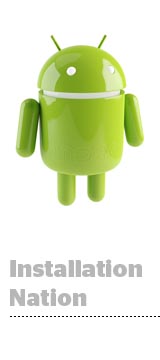First Facebook, then Twitter and now Google.
The search giant unveiled plans Tuesday to offer app install ads on mobile search and YouTube (where they’ll be presented like TrueView ads), similar to the units that have been a cash cow for Facebook. The company said it plans to launch this new product over the next few months.
No doubt that app installs are the hot ad unit these days. Hyper-competitive app developers need to drive installs and they invest in mobile advertising to do so. App-install ads, which enable easy downloading, are an effective means of getting this done, which is why it’s no surprise Google has thrown its hat into the ring, following Twitter’s announcement to do the same. Both of Google’s and Twitter’s announcements, of course, come after Facebook has shown demonstrable success with the units.
Lest one thinks all app install ads are the same, Google’s targeting parameters seem like a key point of differentiation. Businesses can target based on how an individual has interacted with various apps in the past. Businesses will be able to target consumers based on which apps she’s downloaded, the frequency with which she uses various apps and whether they’ve made in-app purchases before.
Someone who engages heavily with a running app, for instance, might get an advertisement for another fitness-related app. Such are the benefits of controlling the actual mobile operating system (the corollary of course is that unlike Facebook and Twitter, Google might find itself limited in Apple iOS environments).
With Facebook, targeting centers mostly around profile data. And Twitter’s app install product will target around keywords, user interest and device type.
But one element Google’s app install ads has (or will have, considering only Facebook’s units are generally available) in common with Twitter and Facebook? Deep linking, a discipline that in a few short months has gone from a competitive differentiator to table stakes. With Google’s app install product, if an individual runs a search on her mobile phone, Google can direct that individual specifically to the relevant page within an app. The company gave the following example: Someone doing a mobile search for San Francisco hotels can be sent to a listing of relevant lodgings on the Hotel Tonight app (assuming its installed on the phone).
Additionally, in-app ads can direct a user to a relevant page within another app.
Facebook, Twitter and Google have all developed deep-linking capabilities in recent months. So too have ad tech companies like Criteo. Bottom line: deep linking for in-app ads is an important component to drive app re-engagements.
It’s been a busy month for Google’s mobile ad developers. Last month, it unveiled several new features on its AdMob network designed to help developers streamline their monetization efforts.
And earlier in April, Google expanded its deep-linking technology to English app content worldwide. It also named 24 more apps that are using its deep-linking technology such as AOL, Bleacher Report, TripAdvisor, Booking.com, Eventbrite and Glassdoor.
Judith Aquino contributed.














